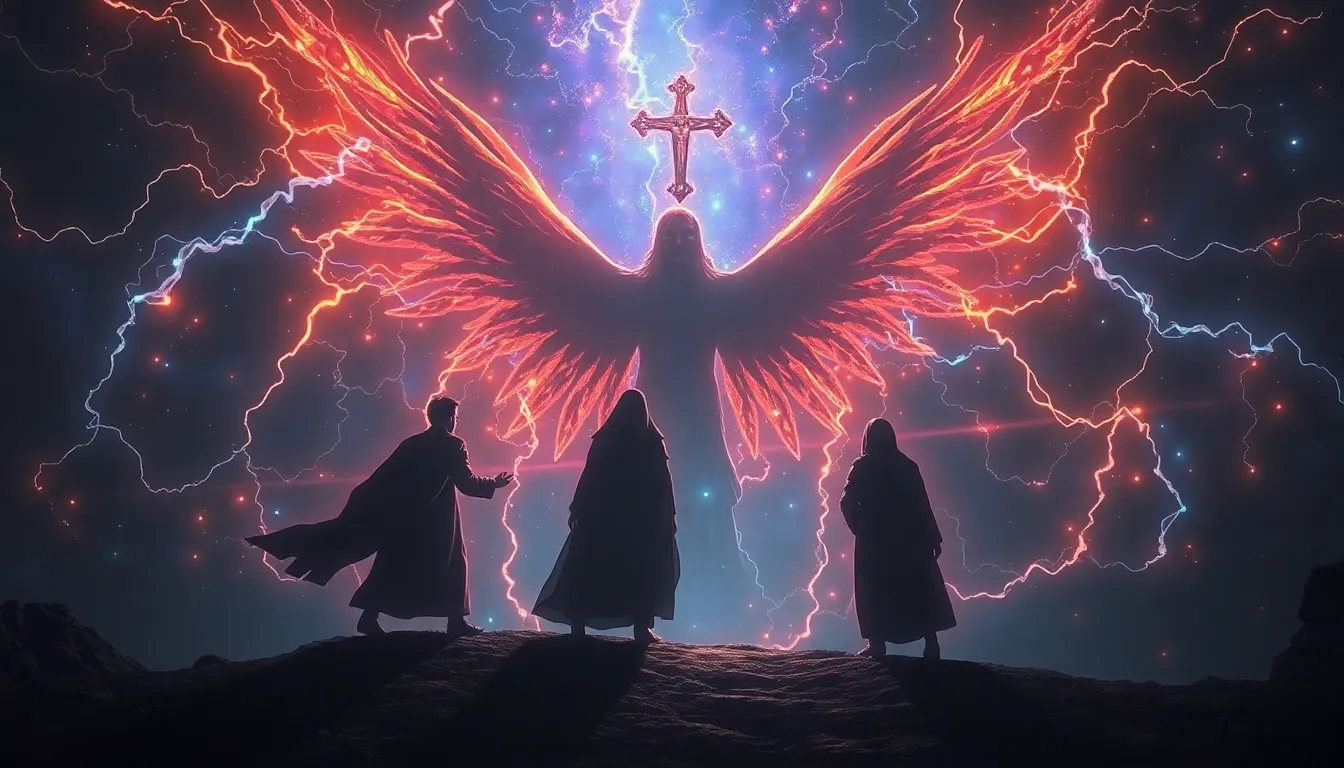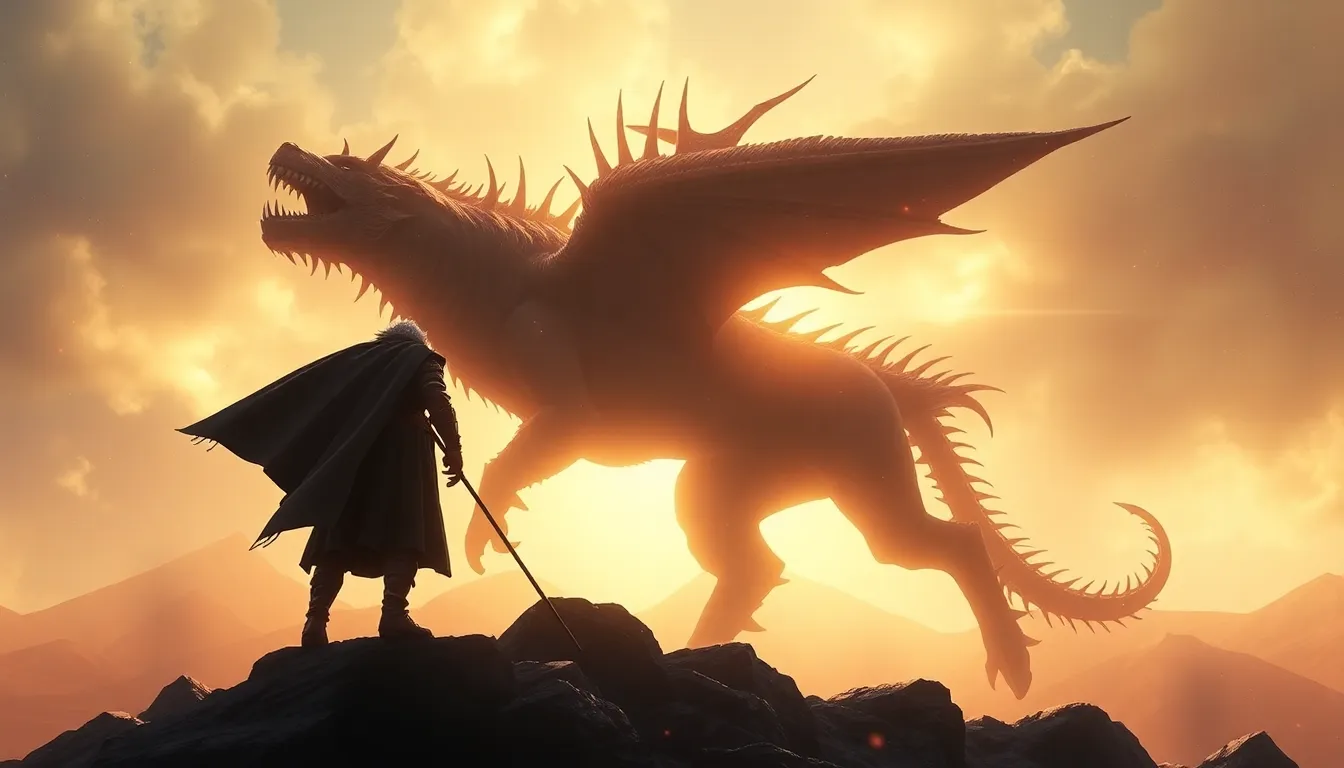The Quest for the Divine Connection: Myths of Unity
I. Introduction
The concept of a divine connection often refers to an intrinsic relationship between humanity and the spiritual or divine realm. It encompasses the idea that individuals are connected to a greater whole, transcending the individual self. This connection is not merely a spiritual notion but a fundamental aspect of human existence that has been explored across cultures and epochs.
Unity plays a crucial role in various spiritual traditions. Many belief systems emphasize the importance of interconnectedness, suggesting that understanding our unity can lead to greater harmony and peace within ourselves and our communities. Myths serve as vehicles for these teachings, offering narratives that encapsulate the essence of unity.
This article explores the historical context of divine connection, major myths that illustrate unity, the symbolism within these myths, psychological perspectives, modern interpretations, and the future of such myths in our increasingly fragmented world.
II. Historical Context of Divine Connection
Throughout history, civilizations have crafted myths that explore the divine connection and the unity of existence. These stories often reflect the cultural values and spiritual beliefs of their societies.
A. Ancient Civilizations and Their Myths
1. Mesopotamia
In ancient Mesopotamia, myths often revolved around creation stories, such as the Enuma Elish, which narrates the formation of the world from chaos. This myth not only explains the origins of the universe but also emphasizes the interconnectedness of gods, humanity, and nature.
2. Ancient Egypt
Egyptian mythology features the concept of Ma’at, representing truth, balance, and cosmic order. The unity of the universe was symbolized through the interaction of gods and humans, illustrating how divine connection fosters harmony.
B. The Evolution of Spiritual Beliefs and Unity
As societies evolved, so did their spiritual beliefs. Many cultures began to recognize the importance of unity not just in a cosmic sense but also within communities, leading to shared rituals and collective identities.
C. Cross-Cultural Perspectives on the Divine
Across cultures, the divine connection manifests in various forms, often reflecting local customs and beliefs while emphasizing a universal theme of unity. This cross-cultural exploration highlights how different societies interpret the divine connection through their unique lenses.
III. Major Myths of Unity Across Cultures
A. Hinduism: The Concept of Brahman and Atman
In Hindu philosophy, the concepts of Brahman (the universal spirit) and Atman (the individual soul) represent the ultimate unity of all existence. The realization that Atman and Brahman are one leads to spiritual enlightenment and a profound sense of connection with everything.
B. Indigenous Myths: The Circle of Life
Many Indigenous cultures view life as a circle, emphasizing the interconnectedness of all living beings. These myths often teach respect for nature and the importance of maintaining balance within ecosystems, thus fostering unity within communities and the environment.
C. Greek Mythology: The Titan Prometheus and Human Unity
Prometheus, who defied the gods to bring fire to humanity, symbolizes the quest for knowledge and the unification of human experience. His myth highlights themes of sacrifice, community, and the shared journey of humanity towards enlightenment.
D. Christian Myths: The Body of Christ and Community
In Christianity, the metaphor of the Body of Christ illustrates unity among believers. Each member plays a distinct role, yet all are part of a greater whole, reinforcing the importance of community and collective faith.
IV. Symbolism of Unity in Mythology
A. Archetypes Representing Connection
Many myths feature archetypal figures that embody unity, such as the mother goddess, who represents nurturing and connection, or the trickster, who challenges divisions and promotes understanding.
B. Nature and the Cosmos as Symbols of Unity
Narratives often use natural elements—like rivers, mountains, and celestial bodies—to symbolize unity. These elements serve as metaphors for the interconnectedness of life and the divine.
C. The Role of Rituals and Ceremonies in Fostering Connection
Rituals and ceremonies are essential in many cultures, serving as communal expressions of unity. They reinforce shared beliefs and create a sense of belonging among participants.
V. Psychological Perspectives on Myths of Unity
A. Carl Jung and the Collective Unconscious
Carl Jung proposed that myths emerge from the collective unconscious, representing universal human experiences. This perspective suggests that myths serve as a bridge to understanding our shared humanity and fostering unity.
B. The Impact of Myths on Personal Identity and Community
Myths influence personal identity by providing frameworks through which individuals understand their place in the world. They can foster a sense of belonging and reinforce community ties.
C. Myths as Tools for Navigating Existence
Myths offer guidance for navigating life’s challenges, providing narratives that help individuals make sense of their experiences and connect with others.
VI. Modern Interpretations of Ancient Myths
A. Relevance of Myths in Contemporary Spiritual Practices
Modern spiritual practices often draw on ancient myths, adapting them to contemporary contexts. This reinterpretation allows individuals to find meaning and connection in their spiritual journeys.
B. Unity in the Age of Technology and Globalization
As technology and globalization reshape our world, myths of unity can serve as reminders of our shared humanity, promoting understanding across cultural divides.
C. The Shift Towards Interfaith Dialogues
In today’s increasingly pluralistic society, interfaith dialogues foster unity by encouraging understanding and respect among different spiritual traditions.
VII. The Role of Art and Literature in Expressing Divine Connection
A. Mythology in Literature: From Epics to Novels
Literature has long been a medium for exploring myths, using narrative to delve into themes of unity and connection. From ancient epics to modern novels, these stories resonate with readers across time.
B. Visual Arts: Depicting Unity and Divine Connection
Visual art often captures the essence of unity through symbolism and imagery. Artists use their work to express the interconnectedness of life, nature, and the divine.
C. The Influence of Music and Performance Art
Music and performance art serve as powerful expressions of unity, bringing people together in shared experiences that transcend cultural and linguistic barriers.
VIII. Challenges to Achieving Unity
A. Cultural Appropriation vs. Cultural Appreciation
The fine line between cultural appropriation and appreciation poses challenges in understanding and embodying unity. Respectful engagement with different traditions is essential.
B. The Fragmentation of Modern Spirituality
Modern spirituality often faces fragmentation, as individuals seek personalized beliefs. This individualism can lead to divisions, making it challenging to cultivate a sense of unity.
C. Overcoming Division in a Diverse World
Achieving unity in a diverse world requires active efforts to engage with different perspectives, fostering dialogue and understanding rather than division.
IX. The Future of Myths of Unity
A. How Modern Society Can Adapt Ancient Myths
Modern society can adapt ancient myths by reinterpreting their messages to resonate with contemporary issues, thus keeping the spirit of unity alive.
B. The Potential for New Myths in a Globalized World
As the world becomes increasingly interconnected, new myths may emerge that reflect the complexities of global society, offering fresh narratives of unity.
C. Envisioning a Unified Spiritual Future
Envisioning a unified spiritual future involves embracing diversity while recognizing shared human experiences, fostering a global community grounded in connection.
X. Conclusion
In summary, the quest for divine connection and unity through myths is a timeless exploration of what it means to be human. From ancient civilizations to modern interpretations, these narratives shape our understanding of ourselves and our relationships with others.
As we continue this journey, the ongoing quest for divine connection remains vital in fostering understanding, compassion, and unity in an ever-changing world.



